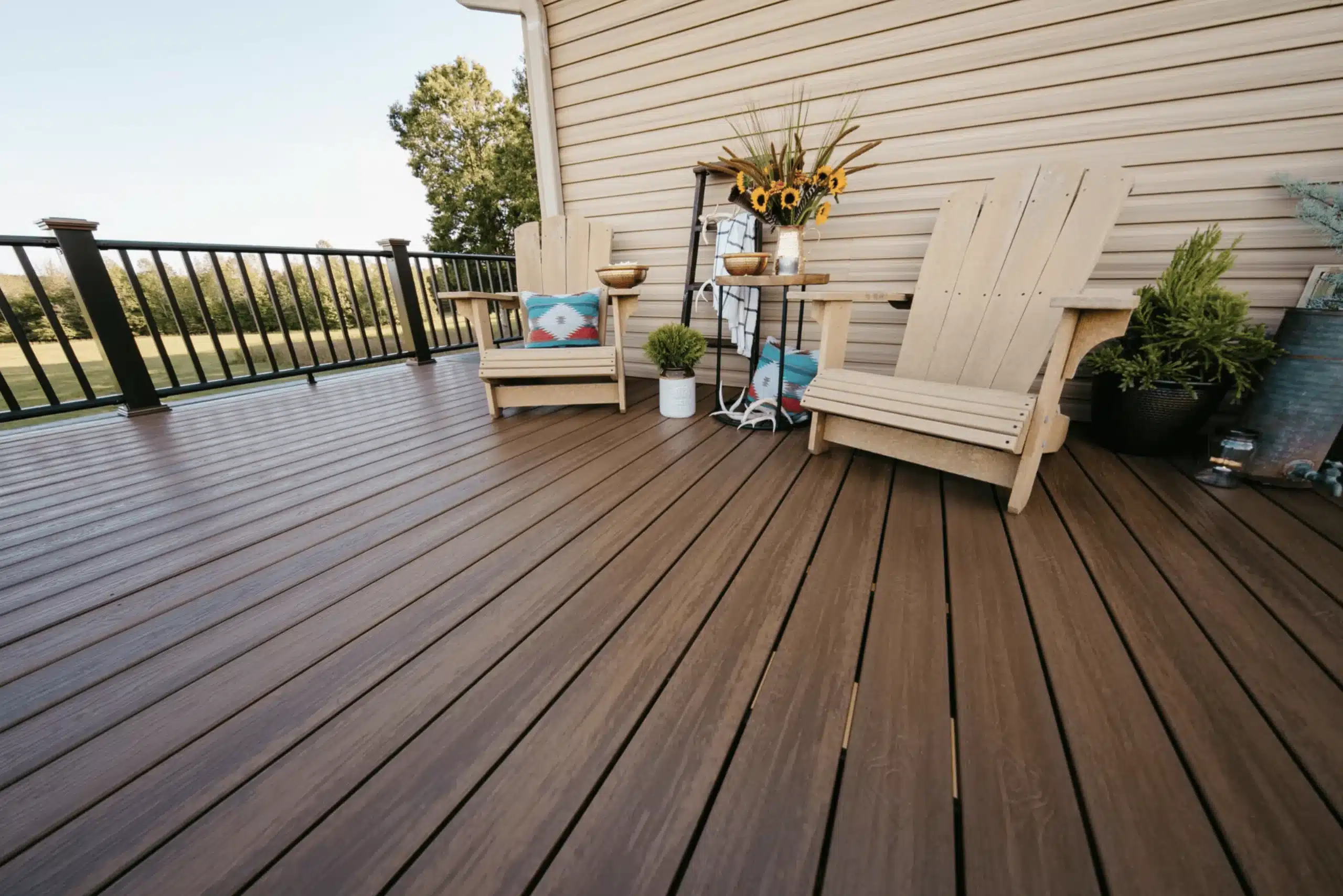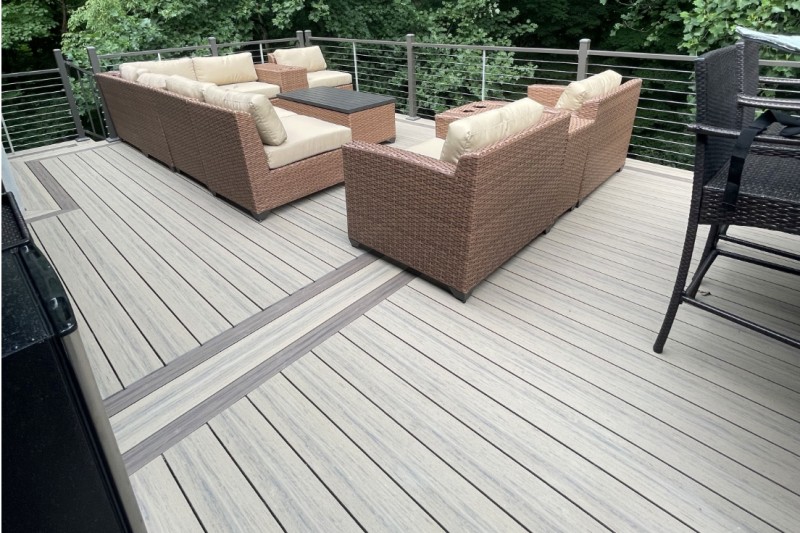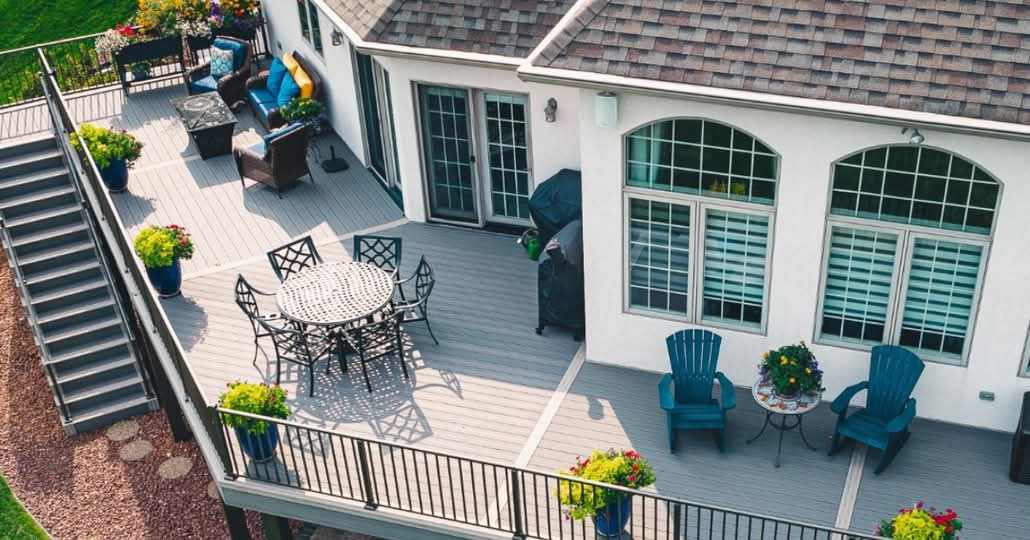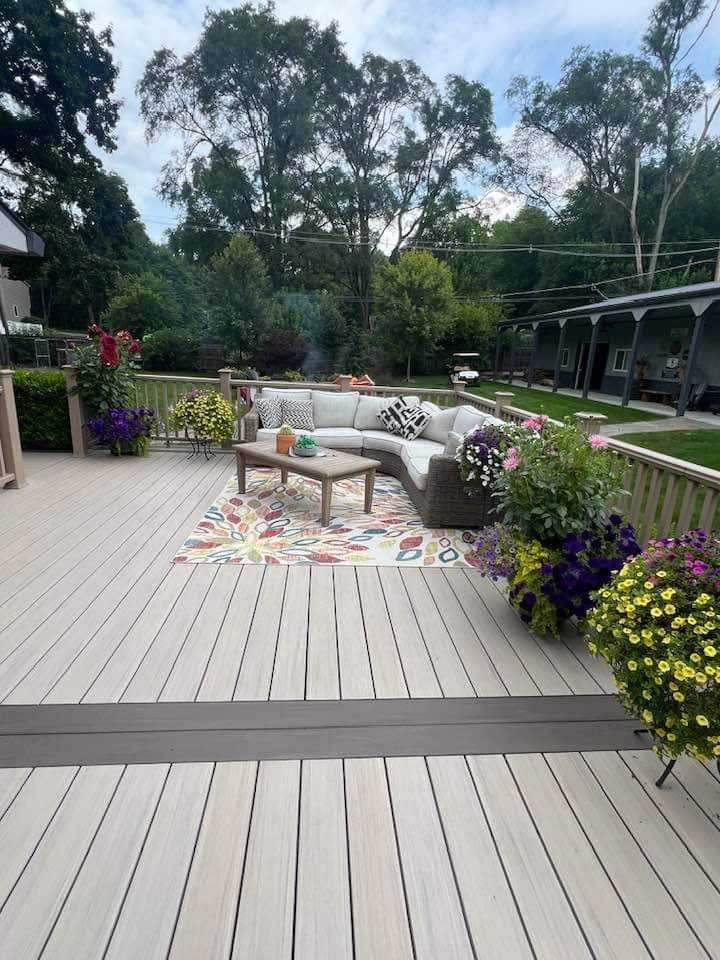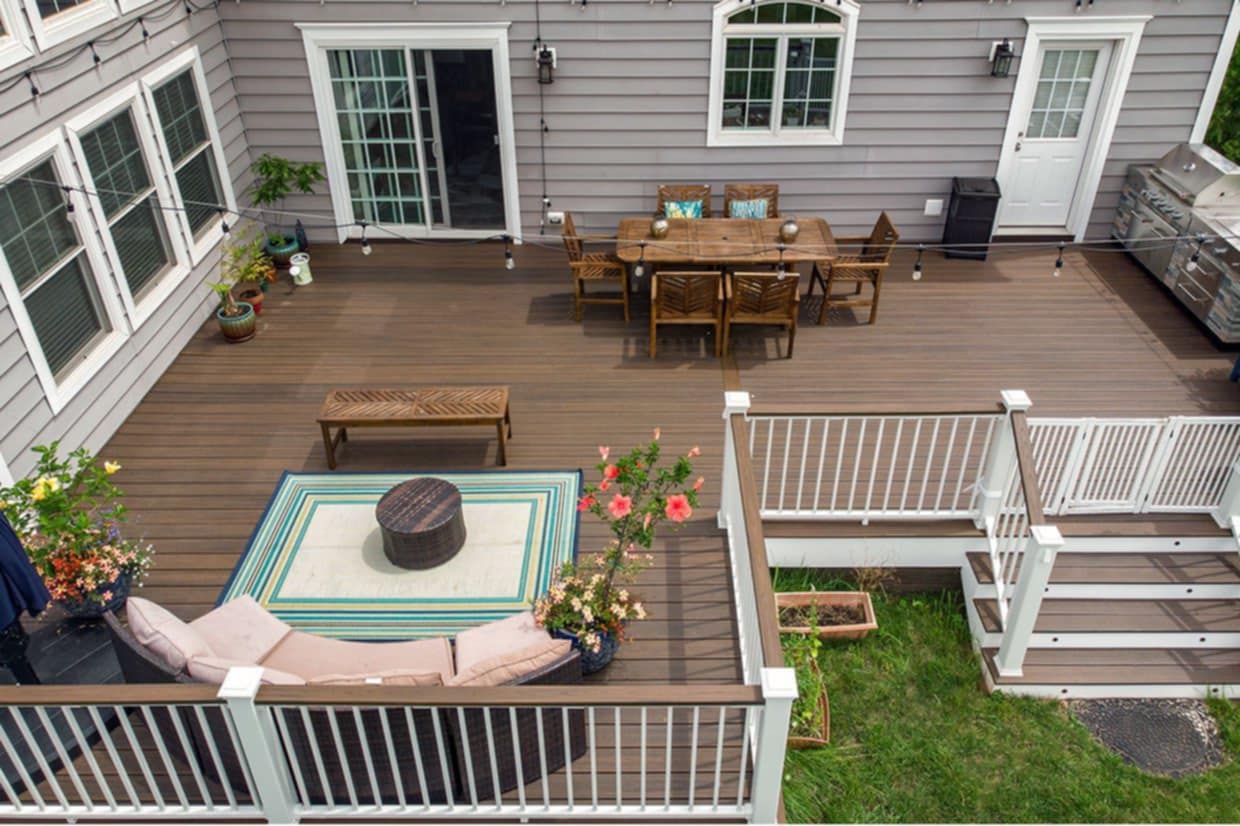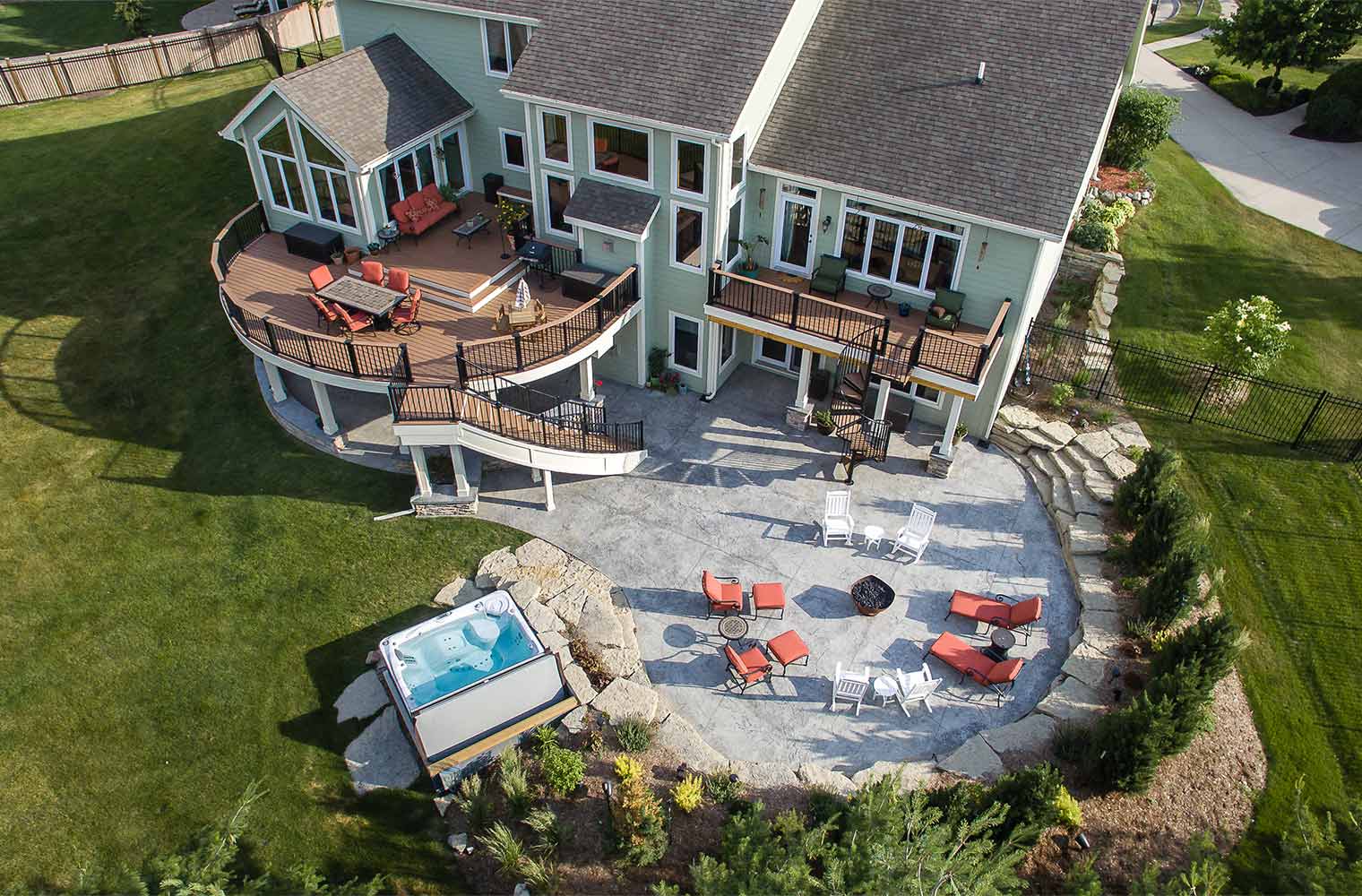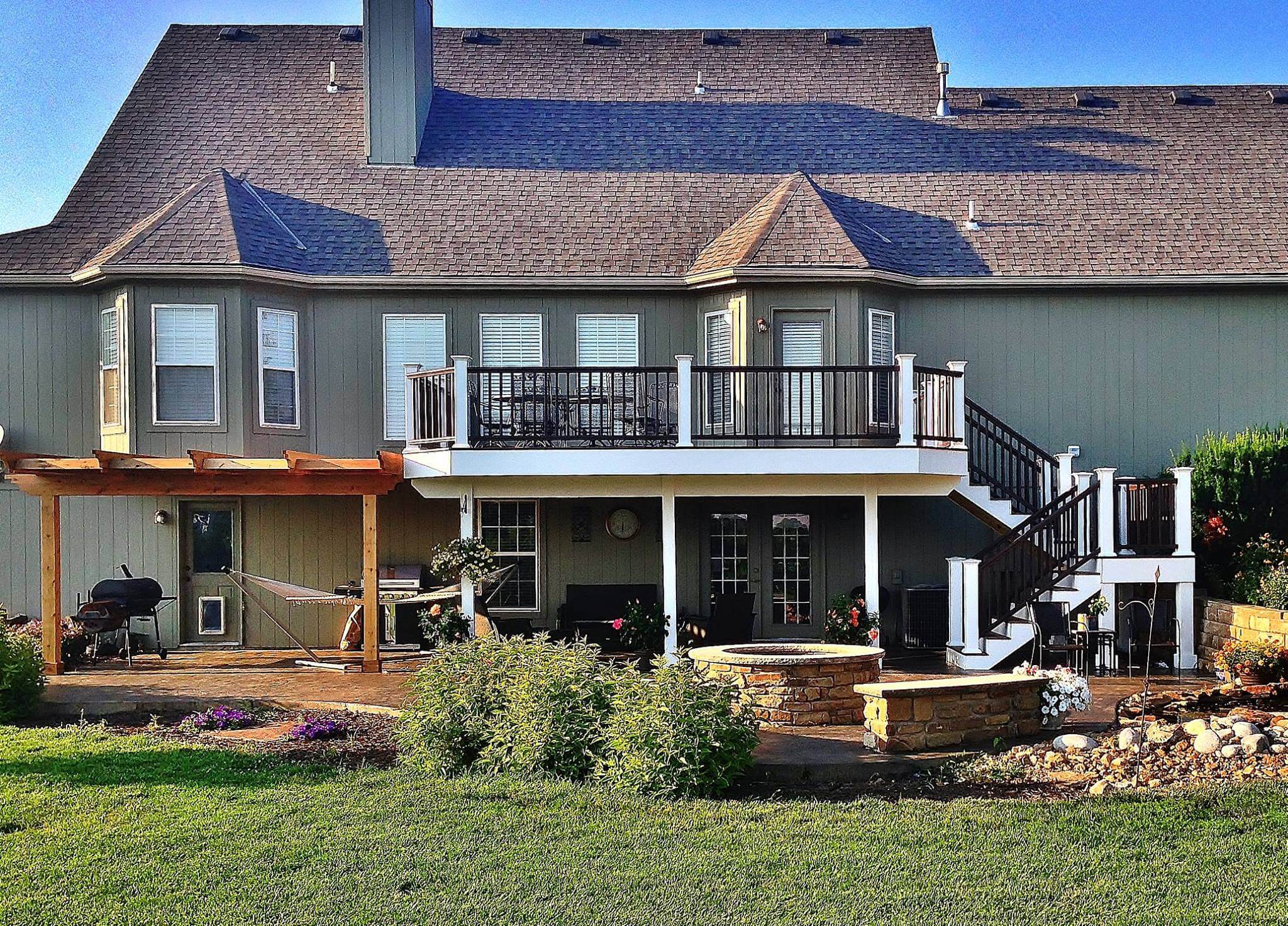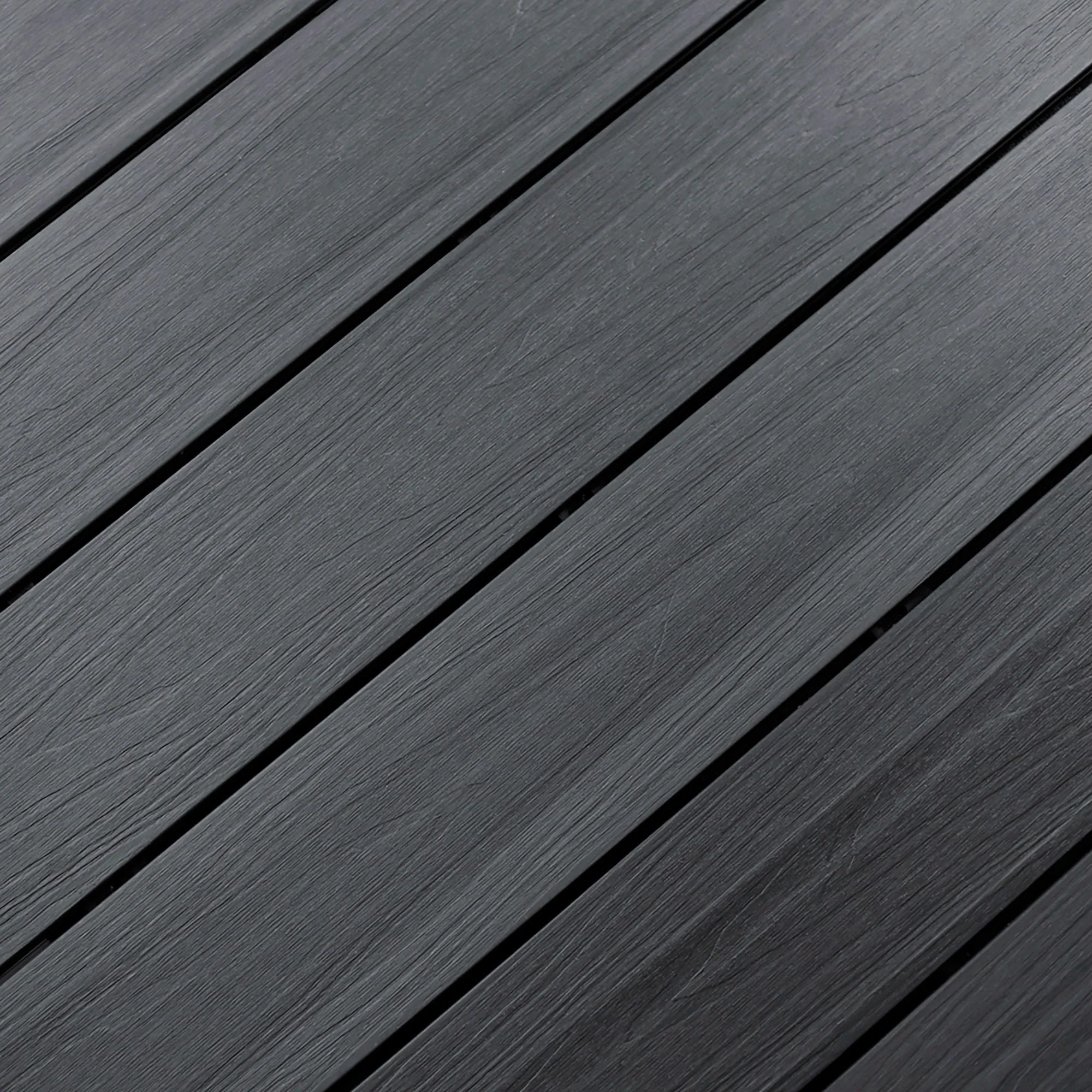What Does Composite Decking’s Capping Mean?
The cap on composite decking is a synthetic layer that surrounds the core of the composite decking to shield it from UV rays, moisture, mildew, and insects. The decking cap also enhances the traction and aesthetics of the decking.
Comparing Capped and Uncapped Composite Decking
The main difference between capped and uncapped composite decking is as follows: uncapped composite decking is essentially just the core of composite material.
Capped composite decking, on the other hand, is composite decking with a bonded shell to protect the material underlying.
You only get the core material with uncapped composite decking, which is formed of a mixture of sawdust and recycled plastic kept together by a bonding agent.
Uncapped composite decking used to be the only type that was available. While it did have some benefits over regular wood decking, including greater durability and less maintenance requirements, there were, and still are, some issues with this type of decking.
If water is allowed to seep into the wood fibers, uncapped decking is susceptible to oxidation, UV ray damage, mildew, and mold growth.
Capped composite decking, on the other hand, has a cover that is bonded to the core material, preventing any water from penetrating the core.
The cover also protects against the fading and staining that UV exposure can cause.
Uncapped composite decking is less expensive overall since it lacks the additional bonded coating, but you can end up paying more in maintenance costs or perhaps replacement due to UV and water damage down the road.
Composite Decking Types Capping Materials: Not all composite decking capping is created equal.
The materials used by various manufactures to protect the core of composite decking vary.
Polymer
The most popular ones are PVC, polypropylene, and polyethylene.
Most of the major manufacturers, including Trex, TimberTech, Fiberon, and Deckorators, cap their decking using various types of polymers and additives.
Acrylic
Fortress and Zuri are two manufacturers that do cap considerably differently. They both use acrylic to cover their decking.
According to Zuri’s independent testing, the acrylic cap is 30% more durable and 5 times more resistant to wear, separating them from other polymer-using brands in terms of cap performance.
Besides that, Zuri composite decking has one of the best ratings for slip resistance.
Due to its enhanced performance, most manufacturers of composite decking have moved over to cap composite decking about 10 years ago.
Deckorators
Fiberon\Fortress\Moisture Shield
Timbertech\Trex\Zuri
Just a few examples. Although capped composite decking is now the norm, several brands still produce uncapped composite.
Brands of Uncapped Composite Decking
The well-known brands Moisture Shield and Ultra deck both sell uncapped composite decking. Both feature capped and uncapped lines but neither is exclusively uncapped.
Uncapped decking from Moisture Shield and Ultra deck both clearly states that it will fade in the sun. similar to wood decking
Pros And Cons Of Uncapped Composite Decking
Pros
Less expensive then capped composite
Cons
Lack of protection from water damage more likely to develop mold or mildew
Lack of resistance to UV light – more likely to stain and fade
Pros and Cons of Capped Composite Decking
Pros
Water-resistant and mold- and mildew-resistant
UV-resistant- backed by manufacturer 25-50 year stain and fade warranties
Improved Appearance and variety
Cons
More Expensive


